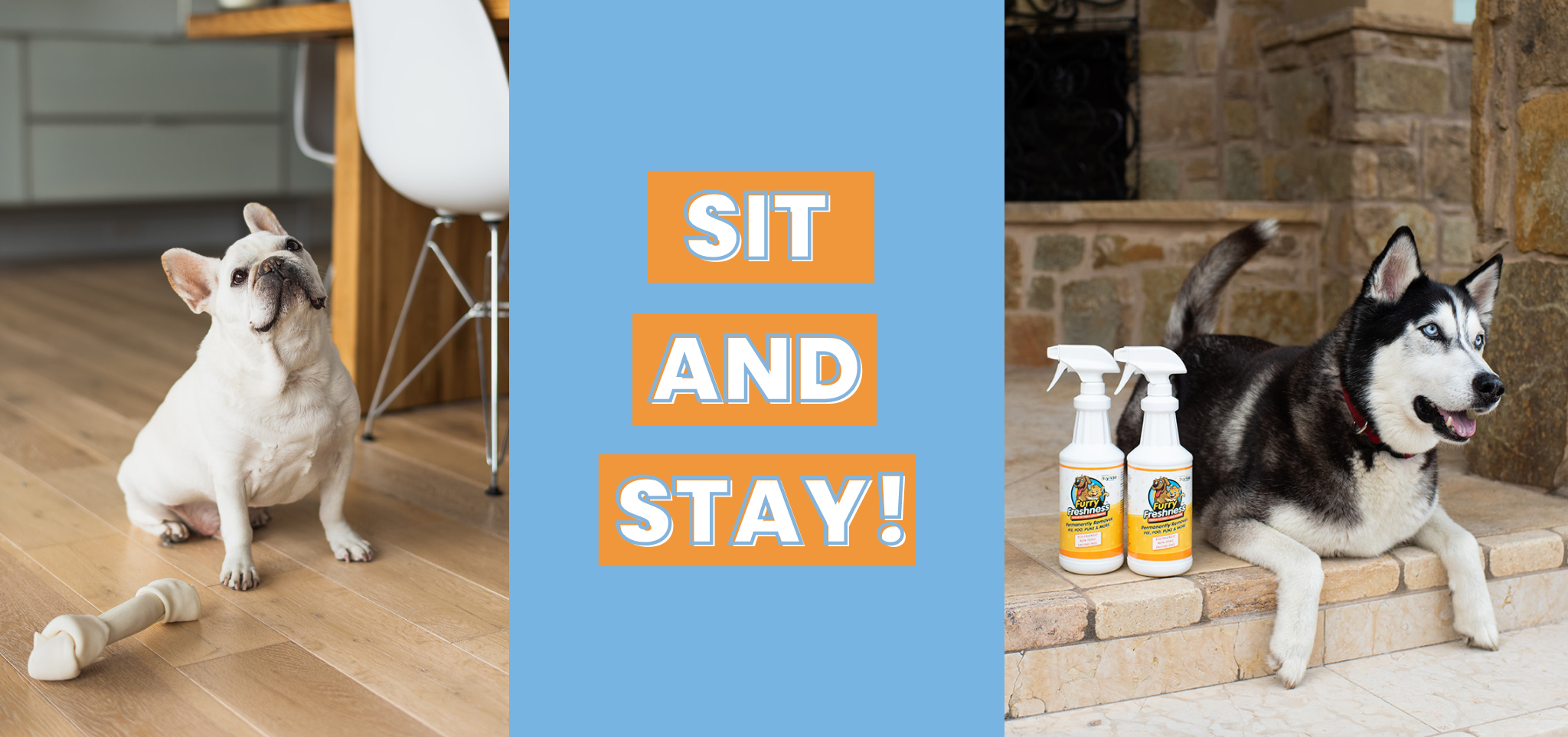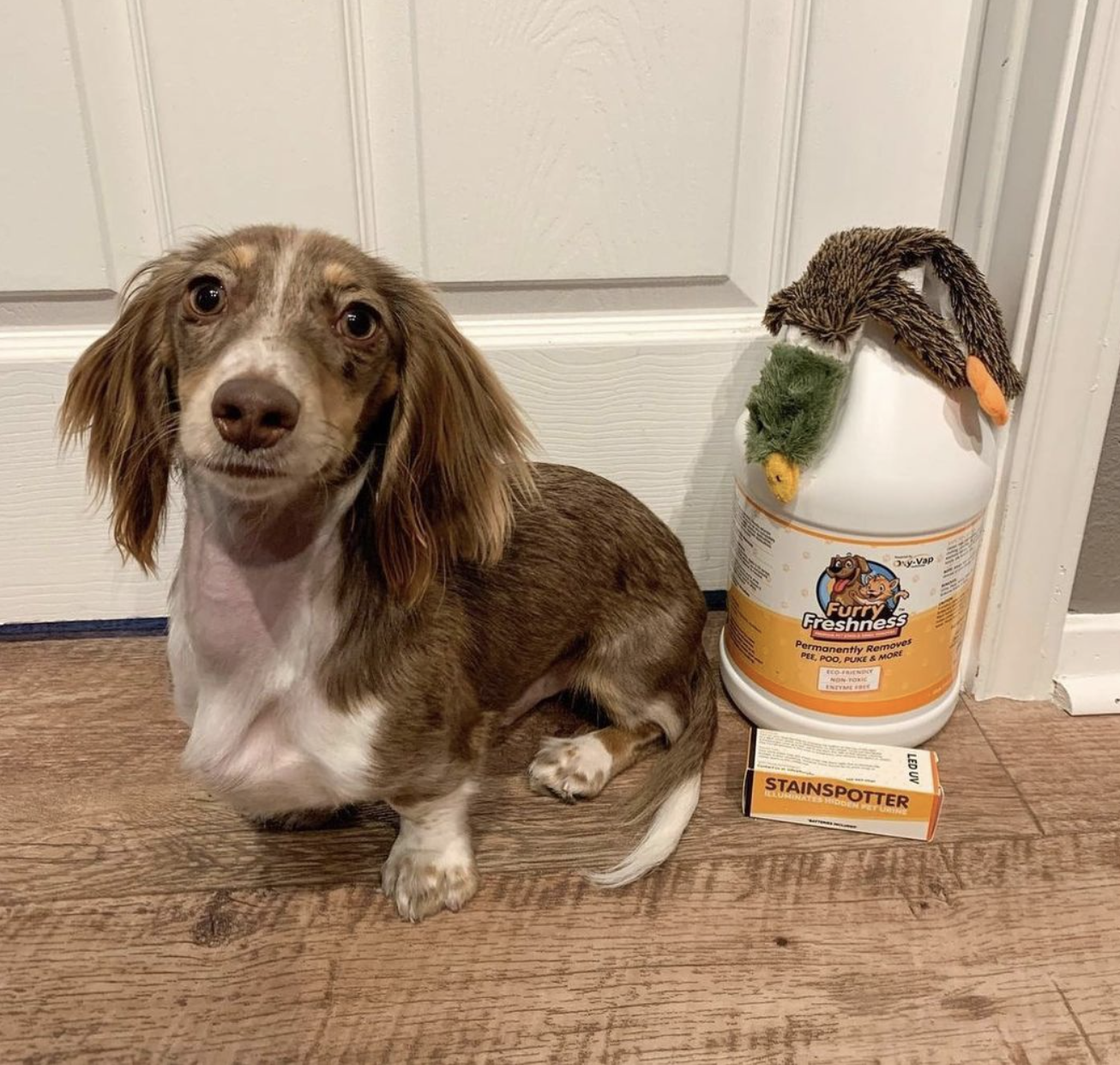Your Cart is Empty
Third Thursday's Training Tips and Tricks!
By FurryFreshness
Training your pet is an important part of being a responsible pet owner! Not only does it help build a stronger bond between you and your pet, but it also helps to ensure their safety and well-being. Whether you have a new puppy or an adult dog, training is an ongoing process that requires patience, dedication, and consistency. In this blog post, we will be focusing on two of the most important commands you can teach your pet: "sit" and "stay." These commands provide a foundation for future training and are essential for good behavior and obedience. Whether you're a first-time pet owner or an experienced trainer, these tips will help you to train your pet effectively and enjoy the process along the way. So, let's get started!
Sitting!
Sitting is one of the most basic obedience commands, and it provides a foundation for future training! Once you and your pet have nailed the sitting command, you can build on it to learn commands like "stay" and "shake!"
-
When training always positive reinforcement!Use treats and praise to reward your dog for good behavior. This will encourage them to repeat the behavior and make the training process more enjoyable for both you and your dog.
-
Choose a quiet, distraction-free environment.This will help your dog to focus on you and the task at hand, rather than being distracted by the environment around them.
-
Use the "lure and reward" method.To get your dog to sit, hold a treat close to their nose and slowly move it over their head. Your dog will naturally follow the treat with their nose and sit down in the process. As soon as their hind end touches the ground, say "good dog" and give them the treat. Repeat this process several times until your dog understands the command. You can also use any other hand signal you'd like to cue "sit."
-
Gradually fade out the treat.Once your dog has learned to sit, you can gradually fade out the treat and use praise and affection instead. It's important to continue to reinforce the behavior with positive reinforcement, even when the treat is no longer being used.
Practice in different environments.Once your dog has learned the "sit" command, it's important to practice it in different environments and with different levels of distractions. This will help them to generalize the behavior and be able to sit in any situation.
Staying
Teaching your dog the "stay" command is another important step in your dog's training. Here are some tips to help you train your dog to stay:
-
Start with short durations:Start by asking your dog to stay for short durations, such as 5 seconds. As they become more proficient, gradually increase the duration of the stay.
-
Use the "wait" hand signal:To help your dog understand the stay command, use a "wait" hand signal. Hold your hand out in front of you, with your palm facing your dog and your fingers spread out.
-
Reinforce the stay with treats: Reinforce the stay command with treats, praise, and affection. This will help your dog to understand that staying in the same position is a desired behavior.
-
Gradually add distance:Once your dog has mastered the stay command while you're close by, gradually add distance between you and your dog. Start by taking a step back and then gradually increasing the distance.
-
Avoid breaking the stay: Once you've asked your dog to stay, avoid breaking the stay by moving towards them or calling them to you. This can confuse your dog and make the training process more difficult.
Use a release word:Use a specific release word, such as "okay" or "free," to signal to your dog that the stay is over. This will help them to understand the boundaries of the stay and make the training process smoother.
Other Tips
Be consistent:Consistency is key when training your dog. Use the same hand signal and verbal command every time. This will help them to associate the signal and command with the behavior and make the training process smoother.
Be patient:Training your dog takes time and patience. Don't expect immediate results, and be willing to repeat the training process until your dog has mastered the behavior.
Avoid using physical punishment: Physical punishment can have negative effects on your dog's behavior and damage your relationship with them. Instead, use positive reinforcement to shape and reinforce good behavior
Please don't hesitate to reach out to us if you need anything or have any questions!
info@furryfreshness.com or 866.693.8779
Lots of love🐾
Bryson, Jennifer & the FurryFreshness Team






